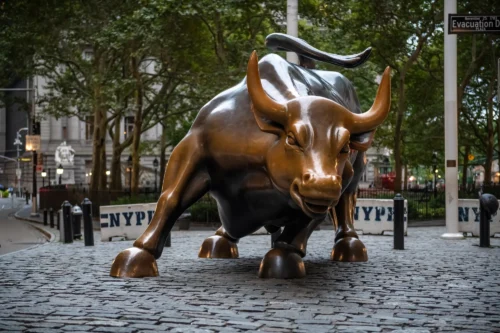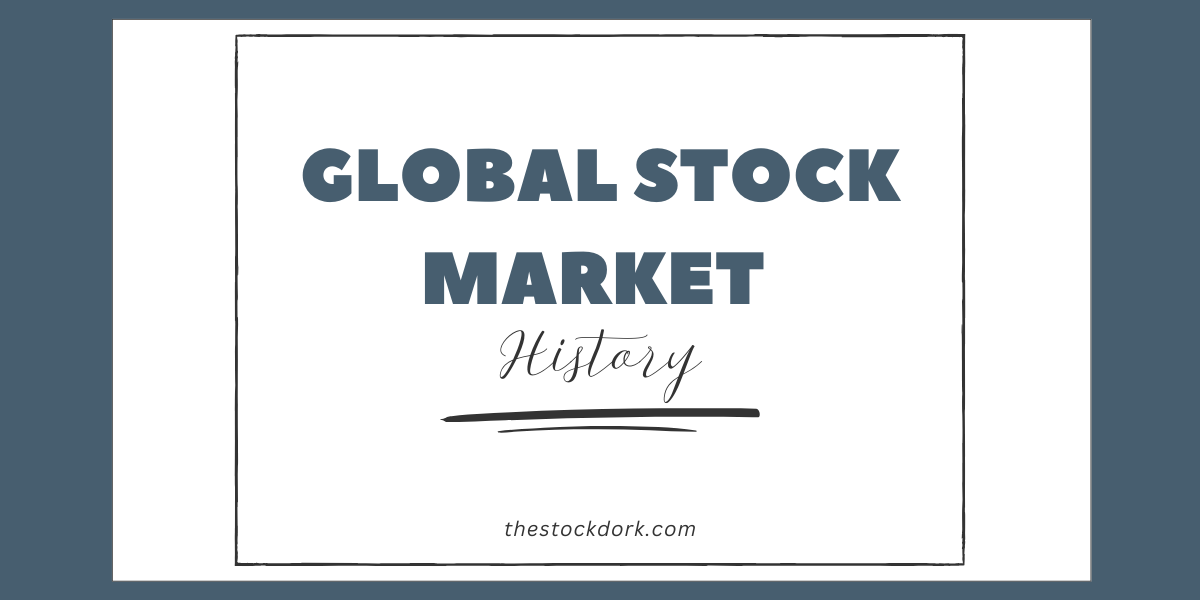The global stock market history is one of ambition, progress, and resilience. For centuries, people have gathered to trade pieces of ownership in businesses, hoping to share in their success.
From the first trading floors in Amsterdam to the lightning-fast exchanges of today, the history of the stock market is really the story of how trust, technology, and opportunity shaped the world economy.
This guide walks you through the evolution of stock markets and how the world learned to invest together.
The Origins of the Stock Market: Amsterdam’s Big Idea
If you could travel back to Amsterdam in the early 1600s, you’d find a bustling port city at the heart of global trade.
In 1602, the Dutch East India Company, often called the VOC, came up with a revolutionary idea.
They decided to sell small ownership shares to investors so they could fund voyages to Asia. Those investors would then share in the company’s profits.
This was the beginning of what we now call a stock exchange, and it marked the true origins of the stock market.
This simple concept, pooling money to fund big ventures, changed the world. It reduced individual risk and allowed ordinary people to participate in global trade for the first time.
The Amsterdam Stock Exchange became the model for every exchange that followed and began the first chapter in world stock market history.
Europe’s Expanding Market: From Coffeehouses to Trading Floors
As Amsterdam thrived, other European cities followed its lead. In London, merchants gathered in coffeehouses to buy and sell company shares.
Over time, this informal trading turned into something more structured.
By 1801, the London Stock Exchange officially opened its doors, signaling a new era in the history of European stock markets.
Sadly, not every chapter was smooth. In 1720, Britain faced one of the first major financial disasters—the South Sea Bubble. When the South Sea Company collapsed, thousands lost their savings.
It was a painful lesson about speculation and greed, but it also led to stronger regulation and more careful investing.

America Joins the Story: Wall Street’s Rise
Across the Atlantic, the American stock market began under a buttonwood tree on Wall Street in 1792. A small group of brokers signed what became known as the Buttonwood Agreement, setting rules for buying and selling shares.
This was the birth of the New York Stock Exchange, which would go on to dominate international stock market history.
Throughout the 1800s, America’s industrial boom fueled rapid growth. Railroads, steel companies, and oil giants all needed money to expand, and they found it by issuing stock to the public.
By the turn of the 20th century, New York had surpassed London as the world’s leading exchange. The history of global financial markets was now being written on Wall Street.
The Roaring Twenties and the Crash of 1929
The 1920s were a time of excitement and optimism. New inventions, rising incomes, and easy credit pushed stock prices higher and higher. Sadly, the good times couldn’t last forever.
In October 1929, the bubble burst. Prices collapsed, banks failed, and the Great Depression began.
The crash was devastating, but it also reshaped how markets worked. Governments introduced strict regulations to protect investors. In the United States, the Securities and Exchange Commission, or SEC, was created to oversee fair trading.
From this painful experience, the history of modern financial markets began to take shape, with lessons about transparency and trust that still guide investors today.
Rebuilding and Expanding: The Postwar Boom
After World War II, much of the world had to start over. Fortunately, the postwar period brought stability and optimism.
The Bretton Woods Agreement helped anchor currencies to the U.S. dollar, creating a stable foundation for global trade. Factories reopened, jobs returned, and families began investing again.
In Japan and Europe, stock exchanges reopened and thrived. Companies that had once been destroyed by war became global leaders in technology, cars, and industry.
The 1950s and 1960s marked a golden age of investing. This was how the global stock market developed into the international system we know today, linking countries and investors across continents.
The Turbulent 1970s: Inflation, Oil, and Innovation
The 1970s tested the resilience of investors. Oil shortages caused prices to soar, inflation surged, and markets struggled. Yet, innovation continued. In 1971, the United States abandoned the gold standard, freeing currencies to float.
That same year, the Nasdaq launched as the first electronic stock exchange, marking a major milestone in the history of global financial markets.
Though investors faced uncertainty, these changes paved the way for a faster, more connected world.
By adapting to technology, markets began a new chapter in their evolution, one where information traveled instantly and opportunities spread worldwide.
The 1980s: Globalization and a New Kind of Market
As technology improved, trading became faster and more accessible. The 1980s brought deregulation, global expansion, and the first computerized trading systems. Unfortunately, 1987 also brought another major shock.
Known as Black Monday, markets around the world fell sharply in a single day. Still, investors bounced back. The lesson was clear: even in the face of fear, markets tend to recover.

The Dot-Com Boom and Bust
By the 1990s, the Internet had captured the world’s imagination. Startups promised to change everything, and investors couldn’t get enough. Between 1995 and 2000, stock prices for technology companies soared.
But when profits failed to appear, the bubble burst. The dot-com crash wiped out trillions of dollars in value.
Yet out of this chaos came giants like Amazon and Google, which went on to reshape the economy. This era in world stock market history reminded investors that while technology brings opportunity, it also demands patience and discernment.
The 2008 Global Financial Crisis
The housing market collapse of 2008 sent shockwaves through every corner of the world. Banks failed, markets plunged, and economies slowed to a crawl. Governments stepped in with massive rescue packages and new regulations.
The Dodd-Frank Act, for example, strengthened oversight of banks and trading practices.
This crisis became one of the defining moments in global stock market history, showing how closely connected financial systems had become. It also inspired a new generation of investors to seek transparency, accountability, and long-term stability.
The Digital Age: Investing Without Borders
Today, the evolution of stock markets has reached a digital frontier. Investors can trade from their phones in seconds. Exchanges operate almost entirely online, and information moves at the speed of light.
China’s markets in Shanghai and Hong Kong now rank among the world’s largest, while technology companies dominate indices like the S&P 500 and Nasdaq.
The COVID-19 pandemic tested this system like never before. Markets crashed in early 2020 but recovered in record time thanks to government support and investor optimism. It was another reminder that resilience has always been part of global market history for investors.
What the Past Teaches Us About the Future
Looking back, it’s clear that every crisis, every recovery, and every innovation added a new layer to the history of the stock market. Markets fall, they rise again, and through it all, people continue to invest in the promise of a better future.
Understanding this story helps investors see that patience, discipline, and perspective are the most powerful tools anyone can have.
Frequently Asked Questions
What are the origins of the stock market?
The first organized stock exchange appeared in Amsterdam in 1602, when the Dutch East India Company sold public shares to fund trade expeditions.
How did the global stock market develop over time?
It evolved from small local exchanges into a worldwide network connecting millions of investors across every continent.
What are the major events in global stock market history?
The South Sea Bubble, the 1929 crash, the 1987 crash, the dot-com collapse, and the 2008 crisis all stand out as pivotal turning points.
How have stock markets evolved over centuries?
From paper trading to electronic systems, markets have adapted to every technological and cultural change while remaining focused on connecting businesses with investors.
Why should investors study global market history?
Because understanding past patterns builds confidence and teaches lessons that help investors make smarter, calmer decisions in the present.
Conclusion
The history of global financial markets is really a history of human progress. From the humble beginnings of Amsterdam’s merchants to the vast digital networks of today, each chapter shows how people continue to find new ways to share in prosperity.
The next stage of this story is still being written, one trade and one dream at a time.


 Tags:
Tags:










